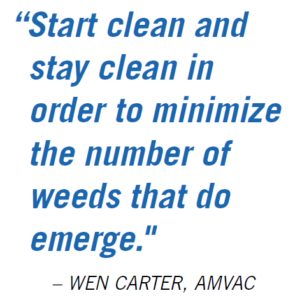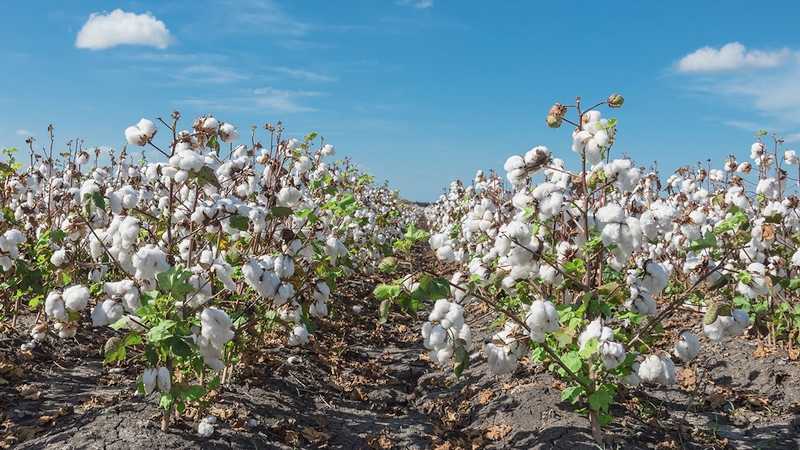Empowering Cotton Growers for a Successful Season
Cotton growers can ensure high-yielding crops by following effective resistance management practices and helping to preserve crop protection chemistries.
As the cotton growing season gains momentum, it’s imperative to evaluate the array of crop protection products available, especially as heightened EPA scrutiny places many chemistries under the microscope. AMVAC remains steadfast in ensuring farmers have access to indispensable weed and pest management tools, working diligently with Cotton Inc., the National Cotton Council, and growers’ associations to support the re-registration of vital chemistries like organophosphates.
Wen Carter, Marketing Manager for cotton, peanuts, rice, and sugarcane at AMVAC, underscores the company’s commitment: “We’re actively engaging with industry stakeholders to safeguard these molecules, ensuring their continued availability for growers.”
Weed Control
AMVAC’s cotton product portfolio offers alternative solutions for chemistries facing scarcity or tighter usage restrictions this season, such as dicamba and 2,4-D. Given the evolving challenges of weed resistance, Carter emphasizes the importance of rotating chemistries along with other established resistance management practices.
 With weed grasses proving increasingly resilient, the broad use of selective herbicides targeting specific varieties can inadvertently foster the prevalence of other species. Therefore, growers must be cognizant of what choices are being made when devising herbicide programs.
With weed grasses proving increasingly resilient, the broad use of selective herbicides targeting specific varieties can inadvertently foster the prevalence of other species. Therefore, growers must be cognizant of what choices are being made when devising herbicide programs.
Zalo™, AMVAC’s latest cotton herbicide with a pre-mix of glusofinate and quizalofop enabled by ProLease™ technology, provides consistent performance across a broad spectrum of annual and perennial grasses while effectively controlling broadleaf weeds. ProLease technology helps overcome degradation, separation, and compatibility or mixing issues in the container and as a mixture in the sprayer.
“If you have restrictions on dicamba or 2,4-D — such as making it past the application window and you need an option that can be sprayed later into the summer, into that June or July timeframe — then Zalo would be a perfect option,” says Carter.
For fields that need control of nutsedge or volunteer soybeans, Carter suggests including Envoke® herbicide in a post-emergent herbicide program. Envoke has tank-mix flexibility, including with glyphosate, to broaden the weed control spectrum. In addition, an over-the-top application acts as a plant growth regulator that allows plants to focus their energy on
fruit development.
Residual herbicides also play a pivotal role in resistant management by suppressing weeds and curbing seed replenishment in the seed bank.
“Start clean and stay clean in order to minimize the number of weeds that do emerge,” says Carter. “In addition, it’s important to rotate chemistries, as we’re limited in the number of tools we have for controlling resistant weeds and we need to preserve them for as long as possible.”
Insect Control
When scouting for insect pests in cotton, thrips often is one of the first to cause damage. AMVAC’s Bidrin® 8 insecticide provides control of thrips, fleahoppers, stink bugs, and tarnished plant bugs without flaring secondary pests like spider mites. Its rapid rainfastness makes it ideal for unpredictable weather conditions.
“If you’re in a summer situation where you need to control bugs and you know there might be a shower popping up, Bidrin 8 is what growers want to lean on since it needs only three hours to become rainfast without reducing efficacy,” Carter says.
Bidrin is also a valuable tool when rotating chemistries to combat plant bugs later in the season with its swift knockdown effect. In addition, it effectively controls brown and green stink bugs in affected regions.
Defoliation
As the growing season draws to a close, selecting the right cotton defoliant is imperative for harvest readiness. Folex® 6 EC is an industry standard for mature leaf drops.
“Folex is one of the centerpieces of a three-way defoliant program along with ethephon and thidiazuron for mature cotton bolls,” says Carter. “Growers get the boll-opening capability of ethephon along with immature leaf and regrowth protection from the thidiazuron.”
Should the cotton plant boast a dense canopy, Folex offers versatility in a two-pass approach. Initially, it selectively targets mature leaves, preparing the groundwork. Subsequently, a tank mix of ethephon and Folex will facilitate boll openings and thorough leaf removal.
Carter suggests leveraging local university extension services for expert guidance throughout the season, advocating for a proactive approach to new technologies. “While tradition offers valuable insight, innovation is essential for progress,” Carter concludes, urging growers to explore fresh approaches across all aspects of their operation.




